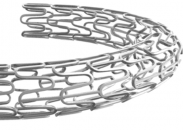The incidence of in-stent restenosis (ISR) requiring repeat revascularization ranges between 5% and 10% of PCI patients receiving new generation drug eluting stents (DES). This is why the current European guidelines on myocardial revascularization recommend treating ISR with drug coated balloons (DCB) with class I recommendation, level of evidence A. DCB are mostly coated with…
Stent Revascularization in Femoropopliteal Disease: An Analysis of Clustered Randomized Trials
A study compared pooled data of claudication and critical ischemia patients treated with stenting vs. by-pass surgery in femoropopliteal disease. The main objective of revascularization in femoropopliteal disease is to improve the quality of life and functional capacity of claudication patients who did not respond to medical treatment, and to save the affected limb in…
Left Main Coronary Artery Percutaneous Coronary Intervention: Evolution and Results over Time
Left main coronary artery percutaneous coronary intervention (LMCA PCI) is a treatment option that is increasingly used in our setting. One of the reasons for choosing this therapeutic strategy is the improvements in devices and techniques. However, the long-term results of LMCA PCI are not well established. The aim of this retrospective study was to…
What Is the Best Strategy for Moderately Complex Femoropopliteal Lesions?
At present, PCI is the preferred treatment for femoropopliteal lesions and drug coated balloons (DCB) have shown good performance. However, they have not yet been shown superior to bare-metal stents (BMS). This study compared randomized trials IN.PACT SFA I/II and IN.PACT JAPAN including 288 patients vs. the prospective Complete SE and DURABILITY II with 483…
Trans-Stent Gradient as a Predictor of Adverse Events at Followup
Stenting a coronary lesion should not present a drop in pressure when measuring the treated segment with fractional flow reserve (FFR). FFR based trans-stent gradient should involve a segment of the sub-expanded vessel or instent obstruction as plaque prolapse or thrombus. The link between post-stenting physiology and long-term outcomes have been looked at in several…
Drug Coated Balloons in Femoropopliteal Territory: Predictors of Failed Patency
Endovascular treatment in femoropopliteal territory has become the strategy of choice over time, with diverse devices; among others, drug coated balloons (DCB). DBS are meant to provide the antiproliferation effect of drugs while reducing exposure of a specific artery segment to a strange body. Even though the number of studies on DCB effectiveness has been…
The New Sirolimus Eluting Balloons Are Also Effective
The technological development of drug eluting stents has allowed us to treat increasingly complex patients, with around 10% stenosis and using more, and longer stents. This situation generates a great challenge: keep using stents or use paclitaxel coated balloons (PCB). At present, there are sirolimus drug coated balloons (SCB), but we do not have enough…
Should We Start Using Ultra-Thin Struts?
The benefits of DES are well known, as well as the benefits of more recent polymer-based DES versions (even those with no polymers). However, strut size is no small matter, and might even make the difference, seeing as thinner struts are associated to better deliverability, simpler crossing profile in bifurcations, better endothelization and healing. Besides,…
Thin vs. Ultrathin Stents: 1-Year Clinical Results After IVUS/OCT-Guided Implantation
Second generation drug-eluting stents have lower frequency of thrombotic complications and in-stent restenosis. While clinical results have significantly improved, having a 2-3% annual rate of these complications within the first year after angioplasty is still worrisome. This resulted in the development of stents with struts <70 µm (ultrathin), with bioresorbable polymer and abluminal cover. Stents…
Is IVUS Guided PCI a Common Technique?
We all know the benefits of ultravascular ultrasound (IVUS) in the development of percutaneous coronary intervention, such as more accurate vessel measurement, improved stent expansion and apposition, and complication identification. This is why the use of IVUS is a class IIa recommendation in AHA and ESC guidelines. The aim of this retrospective study was to…








